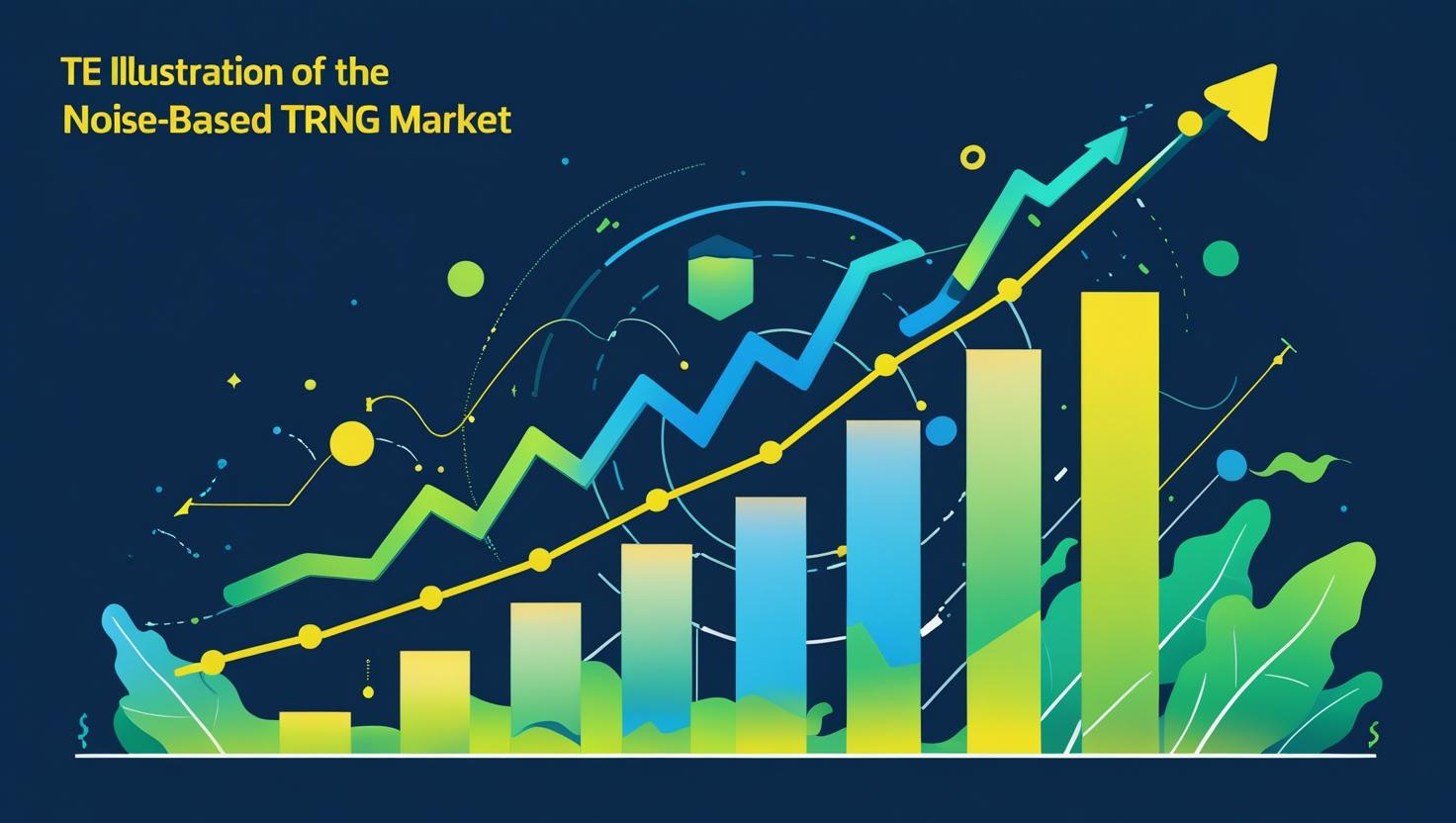In the rapidly expanding digital world, where vast amounts of sensitive information traverse global networks every second, ensuring robust cryptographic security has never been more critical. At the heart of secure encryption lies the concept of randomness, which plays a foundational role in generating secure cryptographic keys. This is where True Random Number Generators (TRNGs) step in—specifically, noise-based TRNGs, which utilize unpredictable physical phenomena to generate randomness. As cyber threats grow more sophisticated and technologies like IoT, blockchain, and quantum computing push the boundaries of data exchange, the demand for reliable random number generation continues to rise, propelling the growth of the noise-based TRNG market.
Understanding Noise-Based TRNGs: Why Noise Matters
Unlike pseudo-random number generators (PRNGs), which rely on algorithms to produce sequences that only appear random, noise-based TRNGs harness inherent randomness from physical processes—such as thermal noise, electrical fluctuations, or quantum phenomena—to generate truly unpredictable sequences. The unpredictability of noise-based TRNGs makes them ideal for cryptographic applications, especially in sectors such as defense, finance, data centers, and secure communications. In an era where deterministic systems are often vulnerable to predictive attacks, the move towards hardware-based, noise-driven randomness is viewed as essential for safeguarding digital infrastructure.
Market Growth Drivers: Security, IoT, and Quantum Computing
The growth of the noise-based TRNG market is being driven by several interrelated factors. Chief among these is the rising emphasis on cybersecurity in the face of evolving threats, particularly as more critical systems—ranging from financial services to national defense—become digitalized. Additionally, the proliferation of Internet of Things (IoT) devices, which require lightweight yet highly secure encryption, is amplifying demand for compact, energy-efficient TRNG solutions embedded at the hardware level.
Another significant driver is the looming threat of quantum computing. Although quantum computing offers tremendous advantages in computational speed, it also poses serious risks to current encryption standards. Noise-based TRNGs are expected to form an integral part of post-quantum cryptography, providing the entropy necessary for secure quantum-resistant cryptographic systems.
Download PDF Brochure @ https://www.marketsandmarkets.com/pdfdownloadNew.asp?id=224265452

Applications Expanding Across Industries
Noise-based TRNGs are no longer confined to niche scientific or defense applications. They are increasingly finding mainstream adoption in consumer electronics, secure mobile payments, blockchain-based systems, automotive cybersecurity, and cloud infrastructure. Enterprises and governments alike recognize the vulnerability posed by weak random number generation, making hardware-based TRNGs a critical investment. Moreover, regulatory standards such as FIPS 140-3 and Common Criteria in cryptographic systems are encouraging broader adoption of certified TRNG technologies, further fueling market growth.
Challenges and Future Outlook
Despite its promising trajectory, the noise-based TRNG market faces technical and commercial challenges. The integration of TRNGs into constrained IoT environments, where size, cost, and power consumption are critical, continues to pose design hurdles. Additionally, the need for third-party certification and rigorous validation standards can slow market adoption, especially for emerging players.
However, advancements in semiconductor technologies, nanomaterials, and quantum noise harnessing are steadily overcoming these obstacles. Looking ahead, as industries increasingly demand quantum-safe cryptography and next-generation secure systems, noise-based TRNGs are expected to play a pivotal role in the cryptographic stack of the future.
Conclusion: Noise-Based TRNGs at the Core of Future Security
As the digital ecosystem continues to evolve, with increasing complexity and interconnectivity, the need for trustworthy, hardware-generated randomness will only intensify. Noise-based TRNGs stand at the intersection of hardware innovation and cybersecurity, offering a future-proof solution to some of the most pressing security challenges of the digital age. With continued investment, research, and collaboration across industries, the noise-based TRNG market is poised to become a cornerstone of global cybersecurity infrastructure for decades to come.
Frequently Asked Questions (FAQ)
What is a Noise-Based True Random Number Generator (TRNG)?
A noise-based TRNG is a hardware-based random number generator that derives its randomness from unpredictable physical phenomena, such as thermal noise or quantum fluctuations, ensuring high levels of entropy for cryptographic applications.
How are noise-based TRNGs different from pseudo-random number generators (PRNGs)?
Unlike PRNGs, which use deterministic algorithms and require a seed to generate seemingly random numbers, noise-based TRNGs rely on real-world physical randomness, making them inherently unpredictable and ideal for cryptographic security.
Why is there increasing demand for noise-based TRNGs?
With rising cyber threats, IoT proliferation, and the emergence of quantum computing, industries require stronger encryption methods. Noise-based TRNGs provide the true randomness necessary to generate secure cryptographic keys that resist sophisticated attacks.
Which industries are adopting noise-based TRNGs?
Key industries include defense, finance, IoT, blockchain, automotive cybersecurity, secure mobile communications, and data centers—any sector requiring robust data protection and encryption.
Are noise-based TRNGs compatible with post-quantum cryptography?
Yes. Noise-based TRNGs are viewed as foundational components of post-quantum cryptographic systems, providing secure entropy for algorithms designed to resist attacks from future quantum computers.
